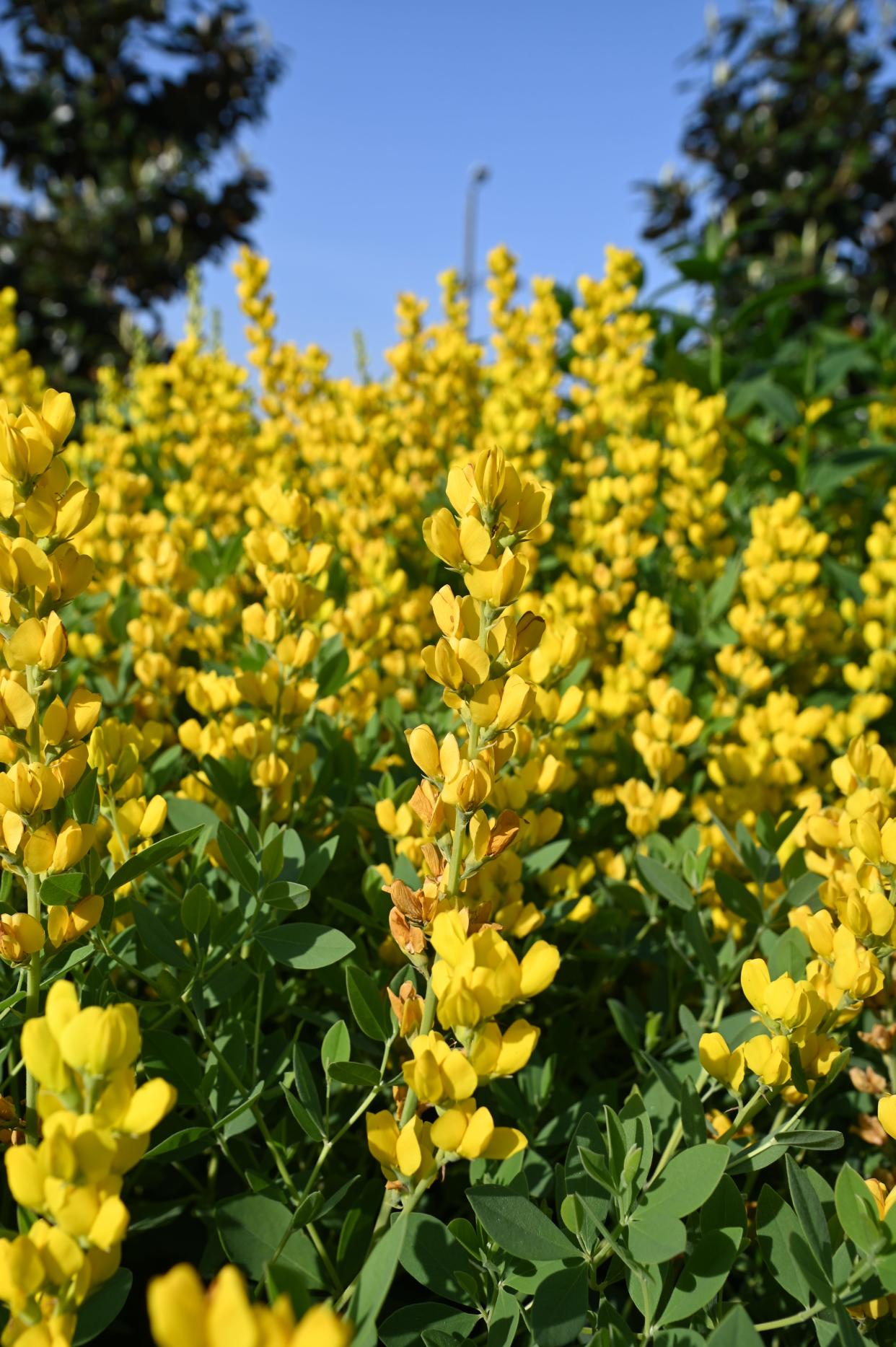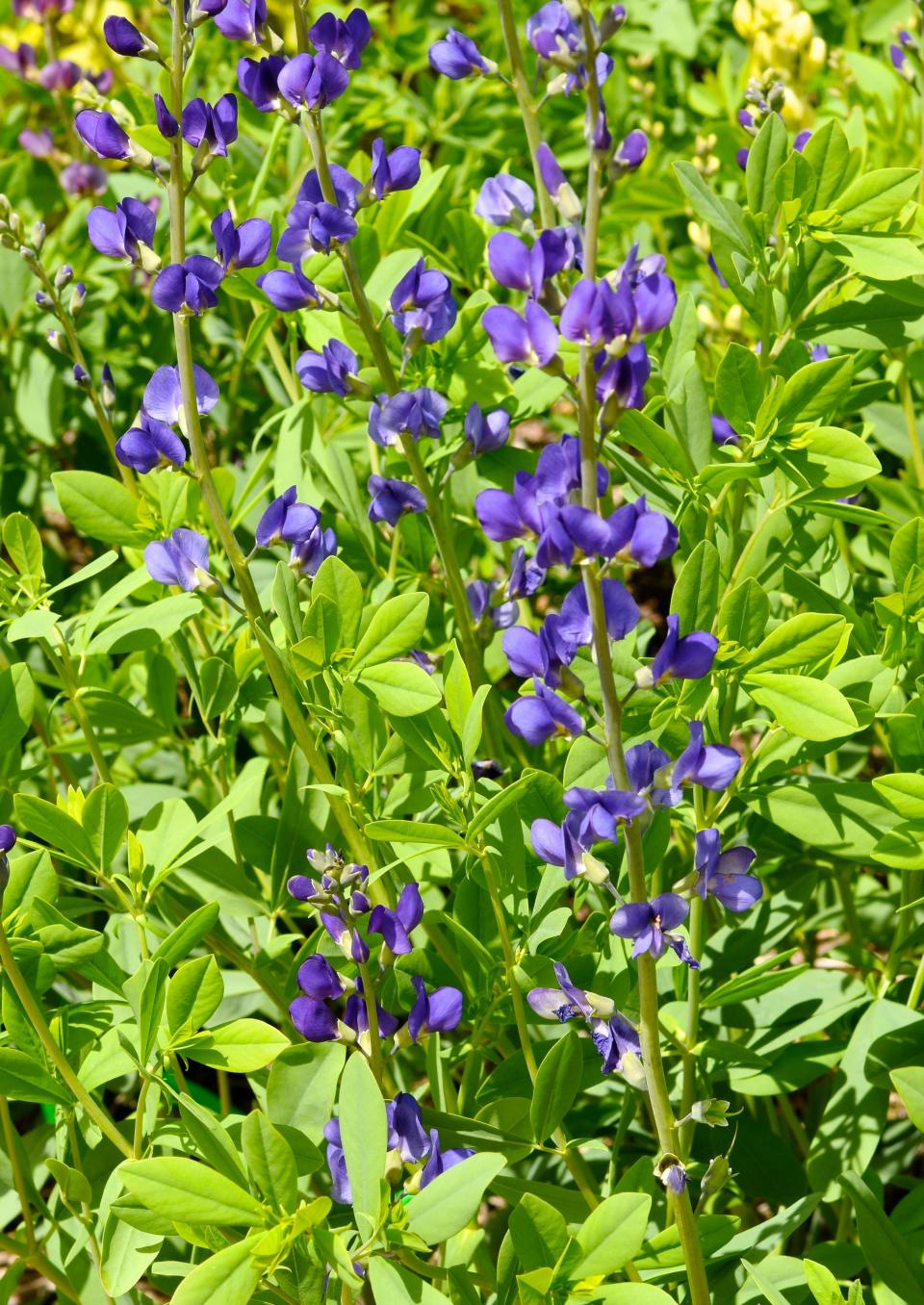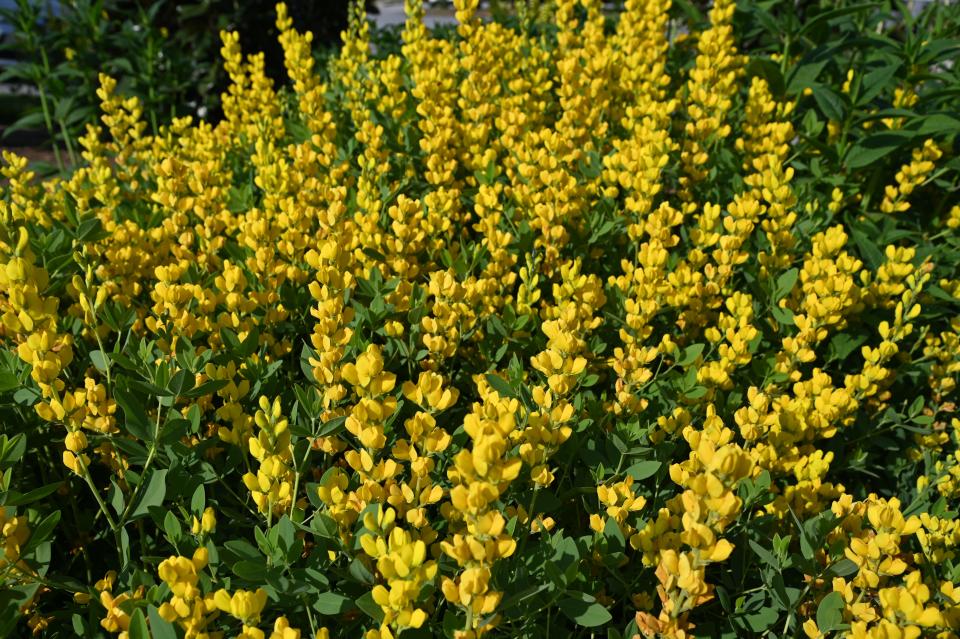Betty Montgomery: Baptisia are architectural gems in the garden

Gardeners are always looking for plants that require little upkeep and yet give a lot; ones that are disease resistant, have pretty flowers and ones that deer find distasteful. They also want a perennial that is long-lived, striking and easy to grow -- one that will make an impact in the garden and look pretty when peppered throughout a perennial border or just used as a single specimen.
Well, Baptisia, commonly known as blue wild indigo, blue false indigo, or false indigo might be just what you want that will fill these categories. Baptisia has pea-like flowers that appear on long stems that are architectural gems in the garden. These spiky forms add a different dimension, as well as an interesting texture to the perennial border. The blue-green foliage is also a plus since it stays pretty in the flower border all summer long.
I also love Baptisia for other reasons. They make great cut flowers, they are a dramatic statement in the garden, and I love the time of year they bloom. We have many trees and shrubs that bloom when the azaleas are in flower and Baptisia begin to bloom as the azaleas are waning and before summer annuals and perennials take center stage. This helps ensure that there will be continuous color in the garden, making it a great transitional plant.

These plants are reliable perennials in USDA hardiness zones 3 to 9. You can start Baptisia plants from seed, but they are slow to get established. It will take about 3 years to bloom and a plant that you purchase could take up to a full year to bloom. On the plus side, these are very long-lived plants that may outlive their owners. The plant will spread, but slowly, and a mature clump takes on the look of a unique shrub in the landscape.
Baptisia are very adaptable and reliable but they do need some sun. If they do not get at least 6 hours of sun, they could flop over and will need to be staked. Plus, full sun also prevents fungal diseases. If they flop over, you can prune them back some to make a shorter, bushier plant. It is best to cut back the stems to the ground in late fall or winter before the new shoots appear. Foot-long spires of pea-like flowers are produced in late spring, after the leaves emerge.

These native plants are found in the woodlands and grasslands of eastern and southern North America. The species most commonly found in cultivation is baptisia australis. However, there are some newer hybrids that have been developed that are outstanding. Breeders are working to have plants with a more compact habit, stronger stems, colors that are more intense, length of the bloom and over all flower display. They also want to see how the plant holes up through and when they bloom and how long they stay in bloom.
Baptisia species come in three flower colors: blue, white and yellow. Blue species are most well known in gardens but they are actually the rarest color in the genus. Today, some of the hybridizers that are working with Baptisia are trying to get more intense, clear colors as well as adding red or pink flowers to the palette. Some of the bright yellows and clear blue ones are my personal favorites but there are other colors that are exceptional too.
Proven Winners have developed some varieties that I love and have added to my garden. ‘Lemon Meringue’ is a vigorous yellow flowered selection. It is an upright, vase-shaped mound of attractive blue-green foliage topped with long, charcoal stems which carry the lemon-yellow flowers in late spring. ‘Blueberry Sundae’ is another one I have which also has this deep blue-green foliage and a little more compact form, growing to 3 feet tall at maturity. Both are vigorous growers with great looking foliage. Both have attractive seed pods that extend the season of interest into the fall.
Proven Winners also have ‘Burgundy Blast’, a shade of dark wine purple flowers, ‘Cherries Jubilee’, a deep maroon, ‘Vanilla Cream’, which is a petite size and has pale yellow buds that open to a creamy vanilla-colored flowers and ‘Pink Lemonade’ which flowers yellow but the blooms age to pink.
I have been asked about pruning and yes, you can prune your plants. You can tidy up your garden, removing the seed heads after they flower. If you want to clean up the plant in fall, do so when the leaves start to drop. This indicates that the plant has gone into dormancy. In colder climates it is good to mulch your bed to protect the root zone.
However, if you want to have more plants, let them go to seed and fall naturally to the ground. You can also remove the seed and plant them where you want to have more Baptisia. Remember, if you want to grow them from seed, they have to put down a deep taproot first and this will take a little longer than other plants to flower.
If there is a drawback to this plant, it would be their height. Breeders are working to make more compact plants, which will make it usable in smaller spaces. There are several that are available that are three feet or shorter. Look for them and keep your eye out for newer introductions in the future.

Betty Montgomery is a master gardener and author of “Hydrangeas: How To Grow, Cultivate & Enjoy,” and “A Four-Season Southern Garden.” She can be reached at bmontgomery40@gmail.com.
This article originally appeared on Herald-Journal: Gems of the garden: Baptista make dramatic statement

